Great mountain bike races of South Africa
I Ride What I Like – Thoughts from a bicycle on State(s) of Nation
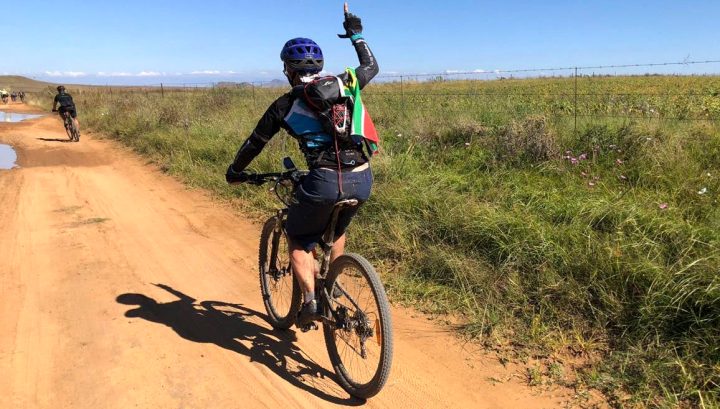
In a world without Covid-19, Thursday would have seen the start of the annual joberg2c mountain bike race but, like many sporting events, it has been cancelled. The field on the outskirts of Heidelberg, where hundreds of nervous men, women and their bikes usually gather for the start, was empty this year. In this memoriam, Mark Heywood explains his love of the race and some of the thoughts it gives rise to.
If the Two Oceans ultra-marathon (also a casualty of Covid-19) claims the mantle of “the world’s most beautiful marathon” — which it does and possibly is — the joberg2c can legitimately claim the title of “the world’s most beautiful mountain bike race”.
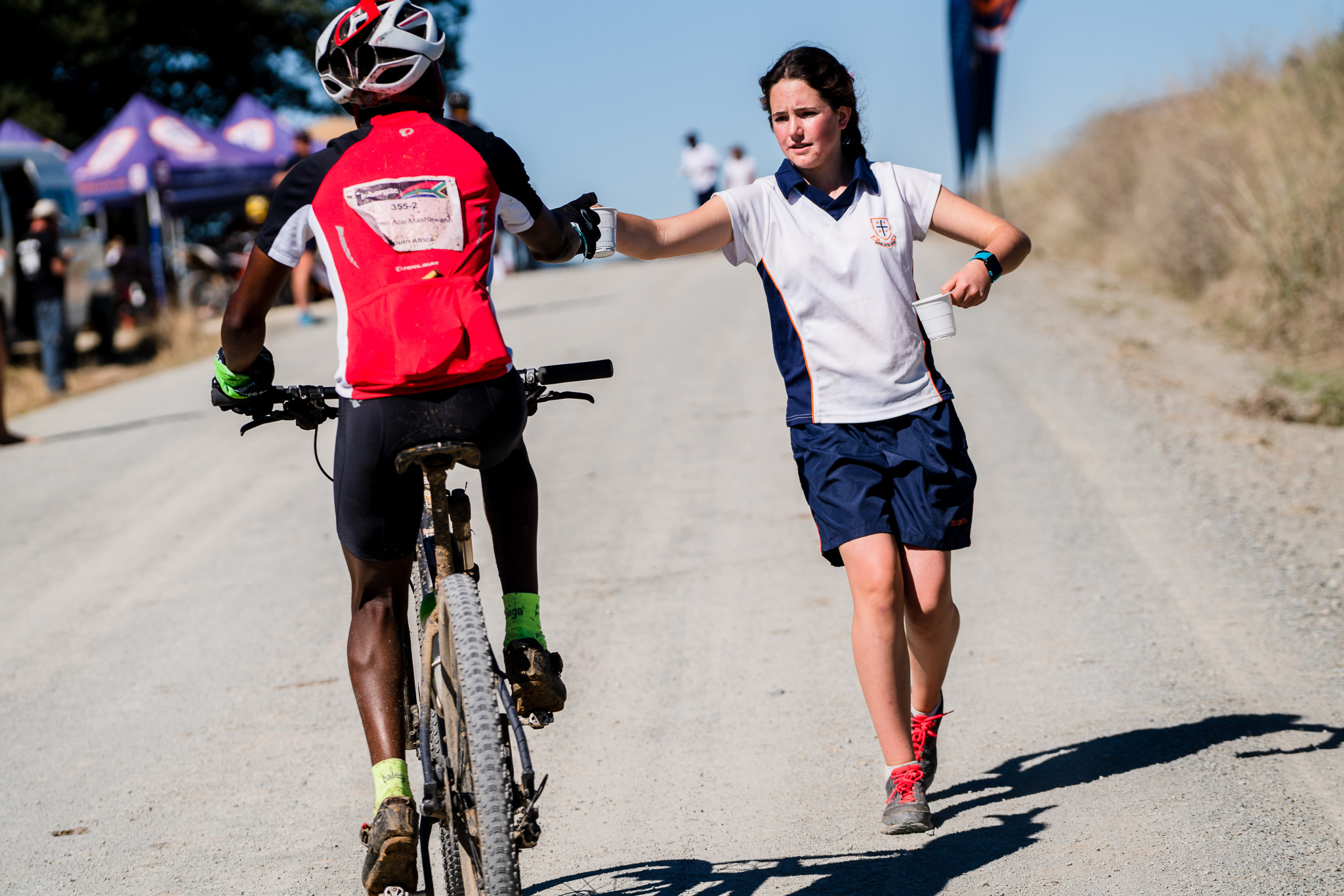
A rider takes on some food and drink at one of the J2C points in 2019. (Photo: J2C)
This 900km two-wheel traverse over byways (but no highways) of Gauteng, Free State, a corner of Mpumalanga, and KwaZulu-Natal sets off from a cattle farm in Heidelberg in late April every year. It ends nine days later by the sea in Scottburgh. Its tenth birthday was in 2019.
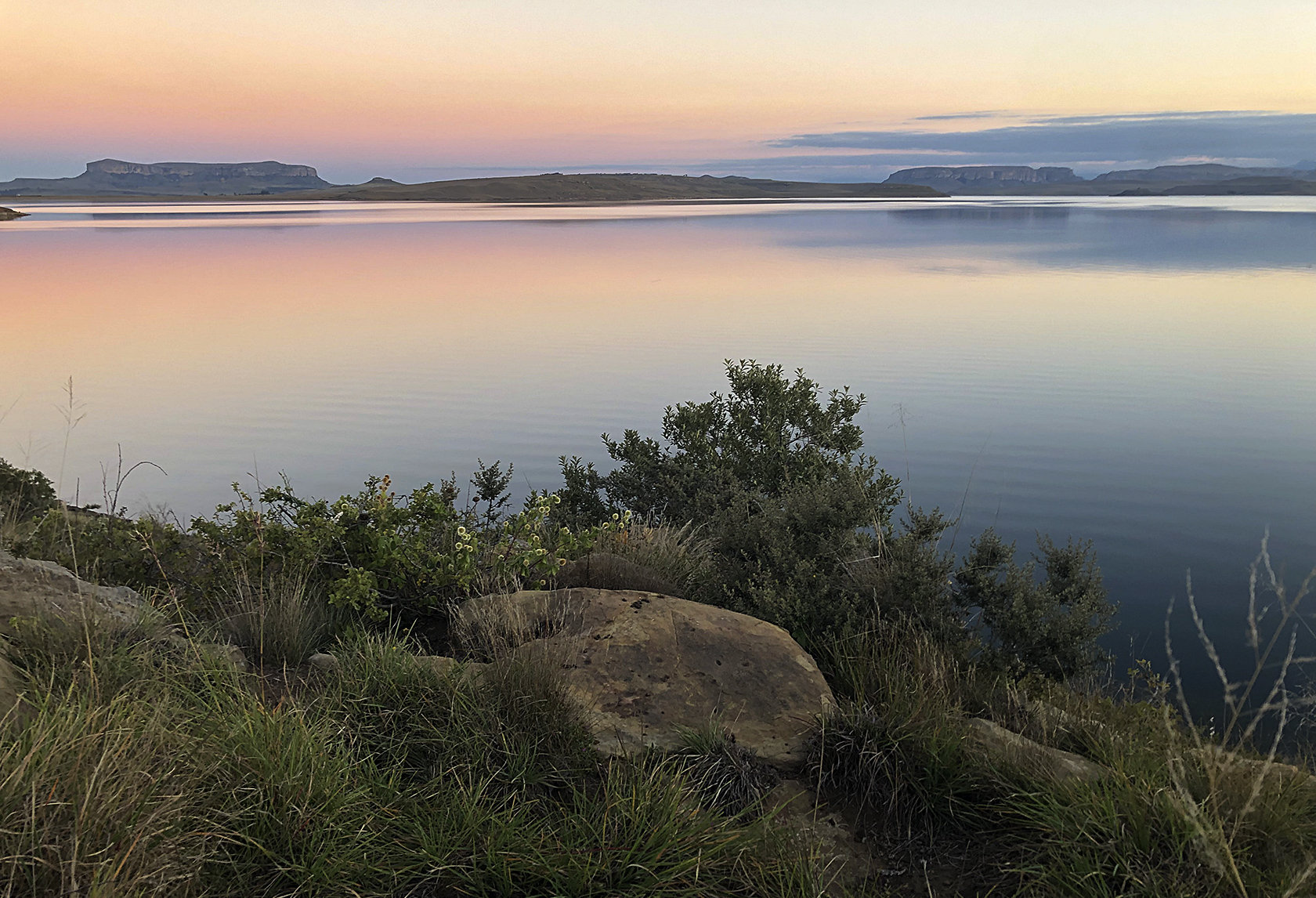
The evening view over the Sterkfontein dam, towards the Maluti mountains. (Photo: Mark Heywood)
“j2c” is an epic journey of sustained beauty. Yet to say that it is the “most beautiful” of anything is a lie, because the beauty that is unraveled along the route changes all the time. It’s not a single or a singular beauty. There are many other parts and places of South Africa’s beautiful land that are invested with great beauty. Nonetheless, this slice, this cross-section across of our country is. Just. Beauty. Personified.
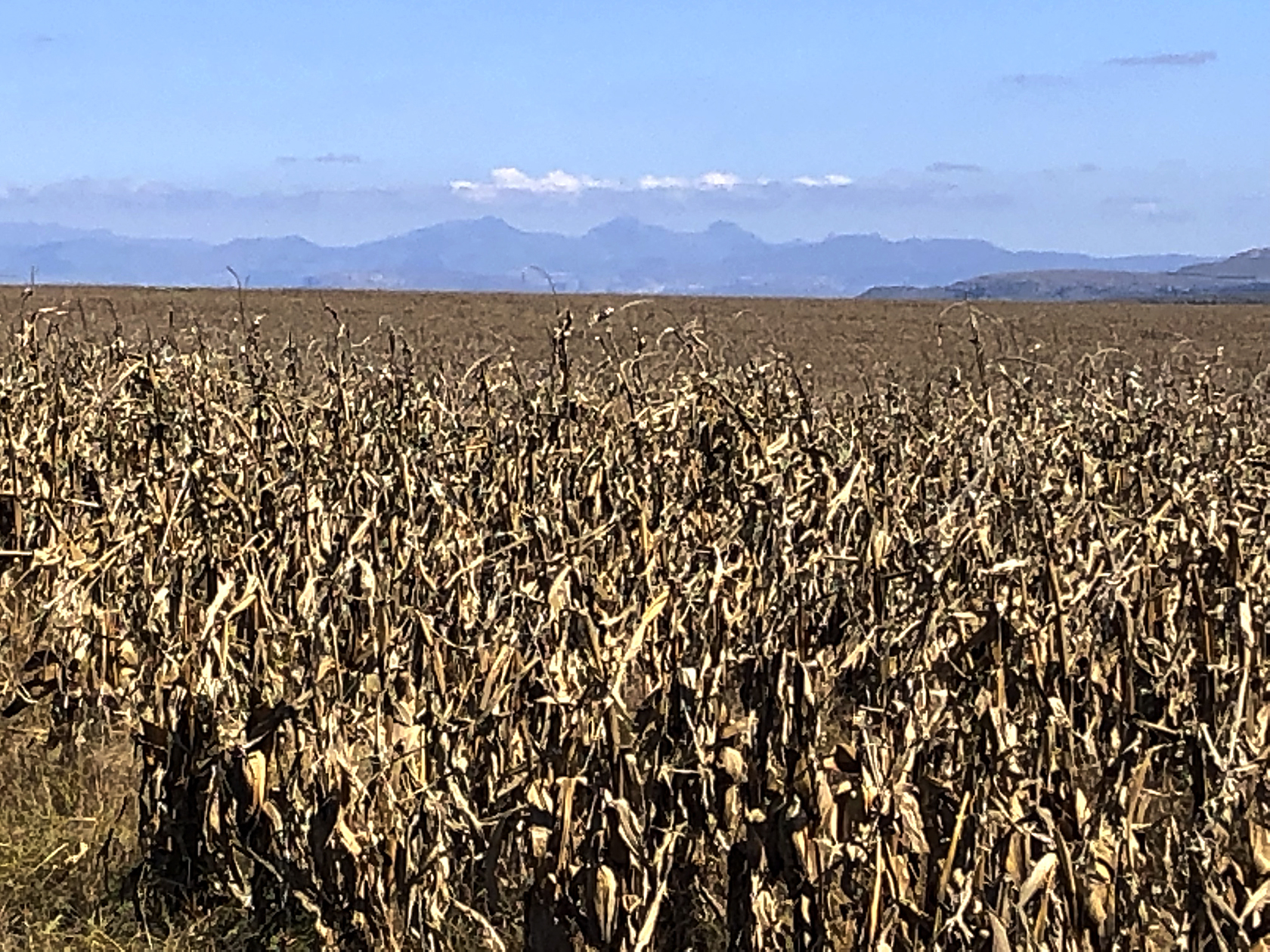
The endless mealie fields of the Free State. (Photo: Mark Heywood)
For the first three days of j2c you cut across endless mealie fields of the Free State. The harvest is in and the stumps are dry and shrivelled. On the evening of the third day, arriving at Sterkfontein Dam, you encounter the Maluti Mountains putting on crimson evening wear as they prepare to slip into darkness; early the next morning they re-emerge, now pyjama-ed in shades of grey, their folds probed and then exposed by the gathering light of dawn.
Lesotho lies within them.
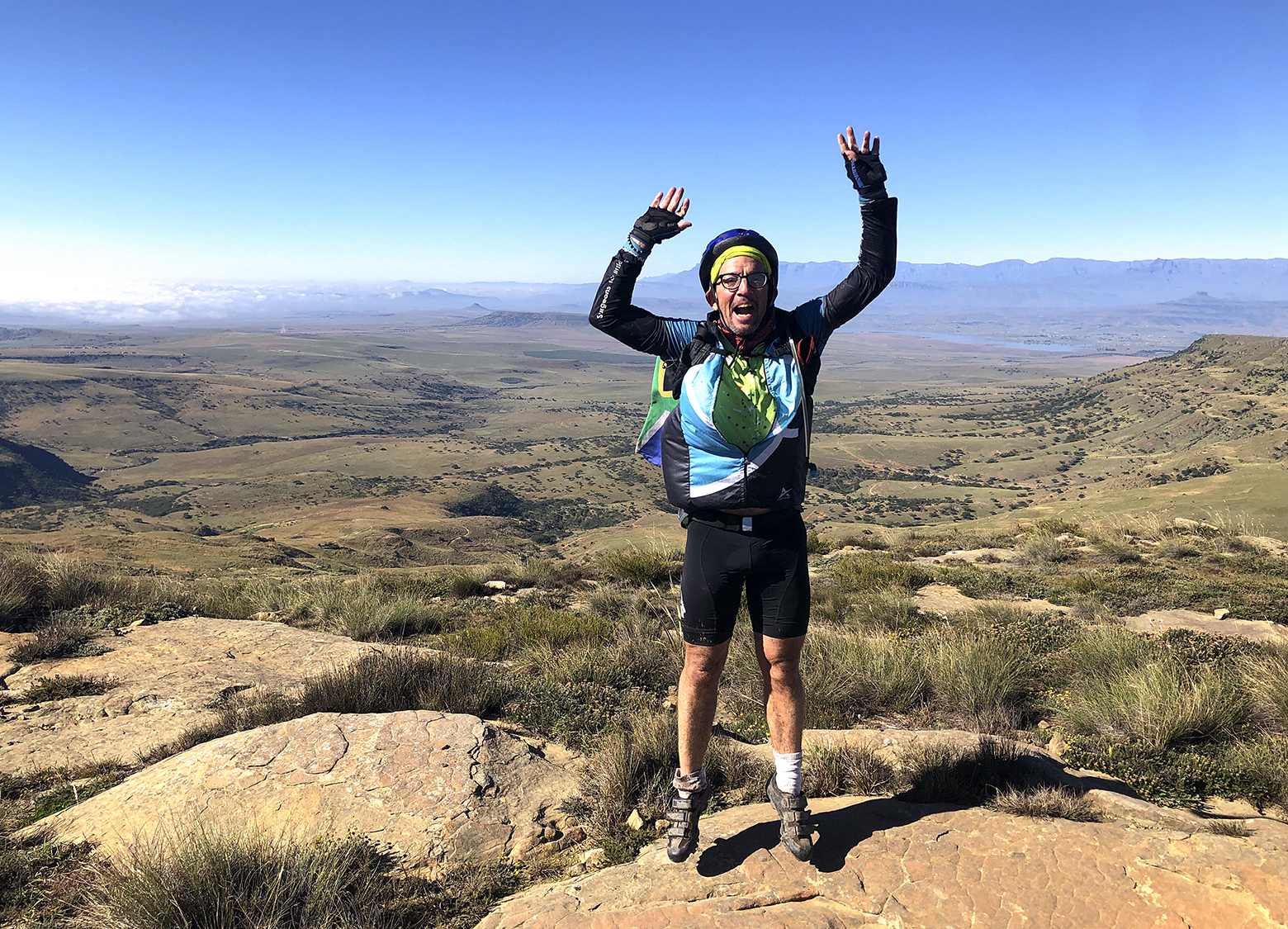
Where bikers dare, Mark Heywood with a view onto the Drakensberg mountains (day 4).
(Photo: Unknown Rider)
On this journey you follow innovative “single-tracks” — what MTBers call their thin pathways that cut unobtrusively and harmlessly across old-as-time mountain slopes that yield to little else other than cows, goats and their herders. You trace the meandering paths of high rivers and streams, each with their own little ecosystem, quiet except for the occasional tread of man or beast and the once-a-year flood of 750 cyclists, few stopping to take in their quietude.
They will miss us this year.
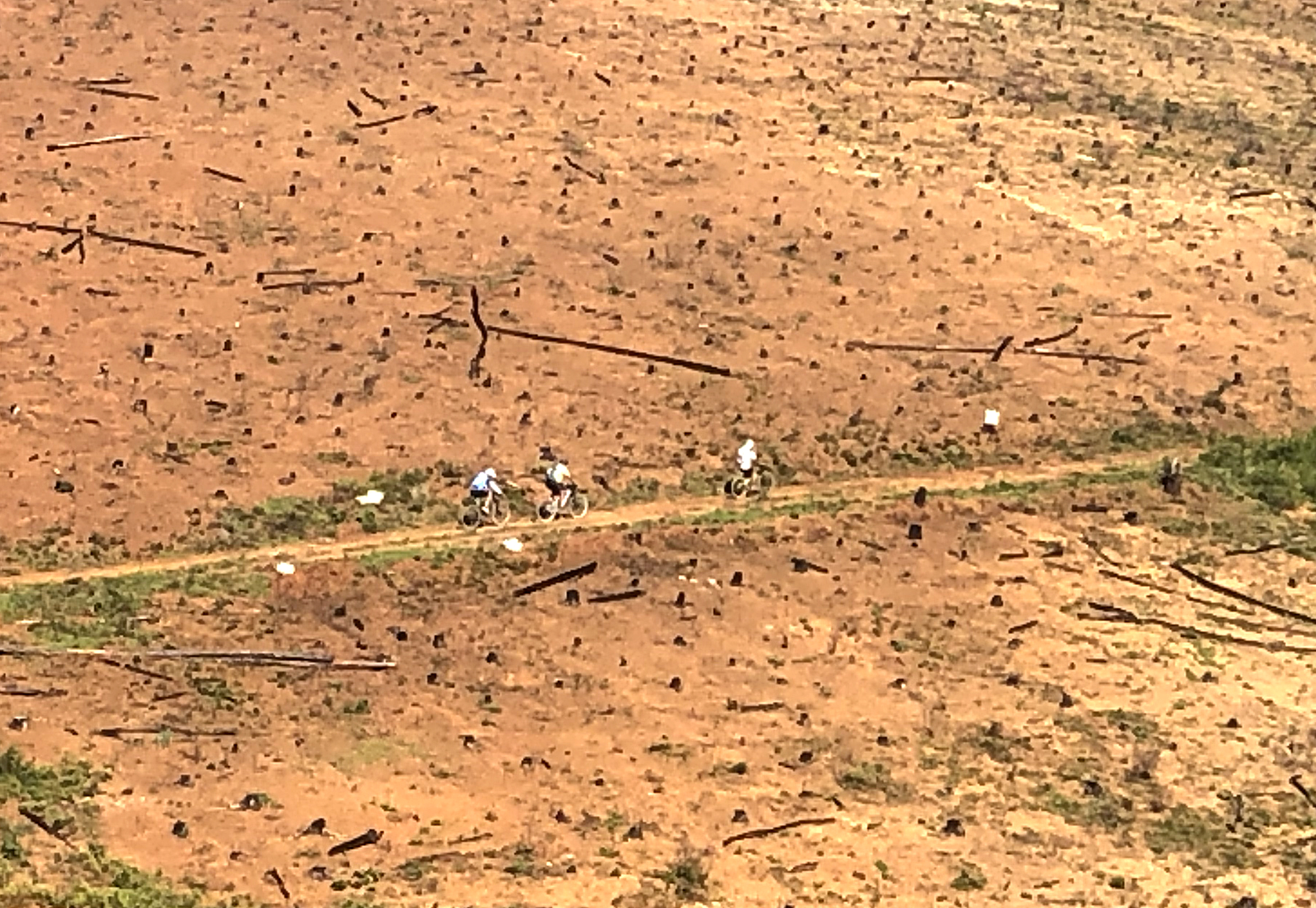
The long and winding road. (Photo: Mark Heywood)
In 2018, for the first time, at the end of day four, the race summited Spioenkop. It’s a hard ride to the top after 80kms but once there it is hard not to reimagine the bloody battle 119 years ago whose graves, little stone mounds against the backdrop of the timeless Ukahlamba/Drakensberg mountain range, speak loudly of the futility of life given up to wars. Whatever the madness of the war-of-the-moment, time will not stop. Many sacrifices will be in vain, for vain and venal objectives.
Once the ride has crossed the Free State and descended the escarpment we pedal through indigenous forests, clinging to hillsides, under attack from industrial agriculture, occupying an ever-shrinking land space, they have countless shades of green, tangled ivies; they offer the cool, quiet shade of an unspoiled glade — except this is a race. One such forest is said to be the last refuge of the near-to-extinction Cape Parrot.
Finally, there’s the grandeur of a canyon as grand as the Grand Canyon, witnessed and felt on a single-track that snakes down the side of a valley to the wide uMkomazi/Umkomaas river below.
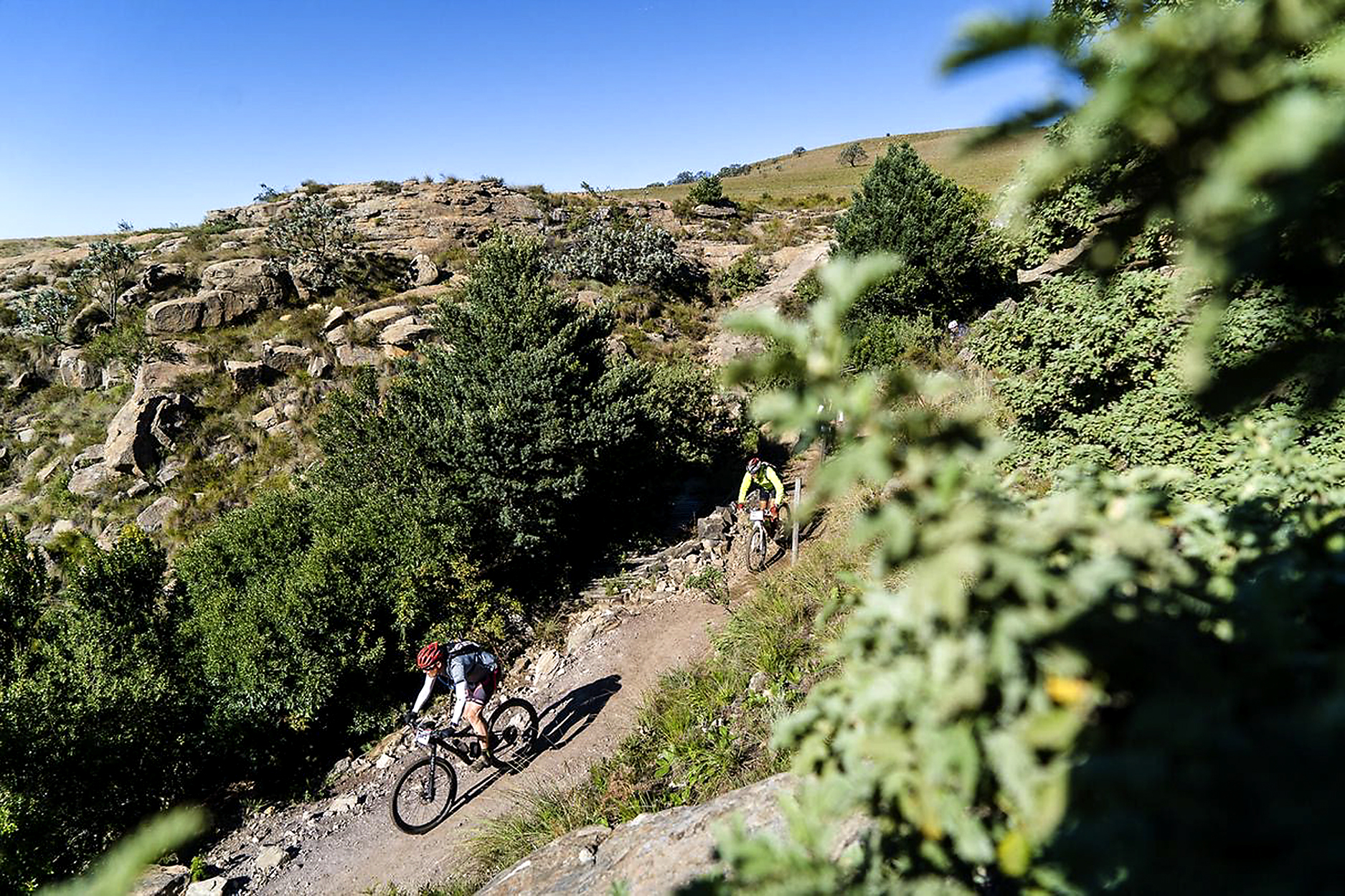
Descending the Umkomaas pass. (Photo: Mark Heywood)
There’s poetry inside the poetry.
I don’t believe in a God. For me there is #GodInEverySmallThing, perfect and contrasting, delicate and intricate and apparently impossible.
There’s so much God in this land.
On a more utilitarian level, the joberg2c is travail to the sources of much of our nation’s food and water. For four of the nine days, the Ukahlamba/Drakensberg mountains are your backdrop, a since-time-began relic, an escarpment that catches and supplies 50% of our water, barrelling it down streams and rivers into a network of dams, including the great Sterkfontein reservoir, the largest earth-walled dam in the world.
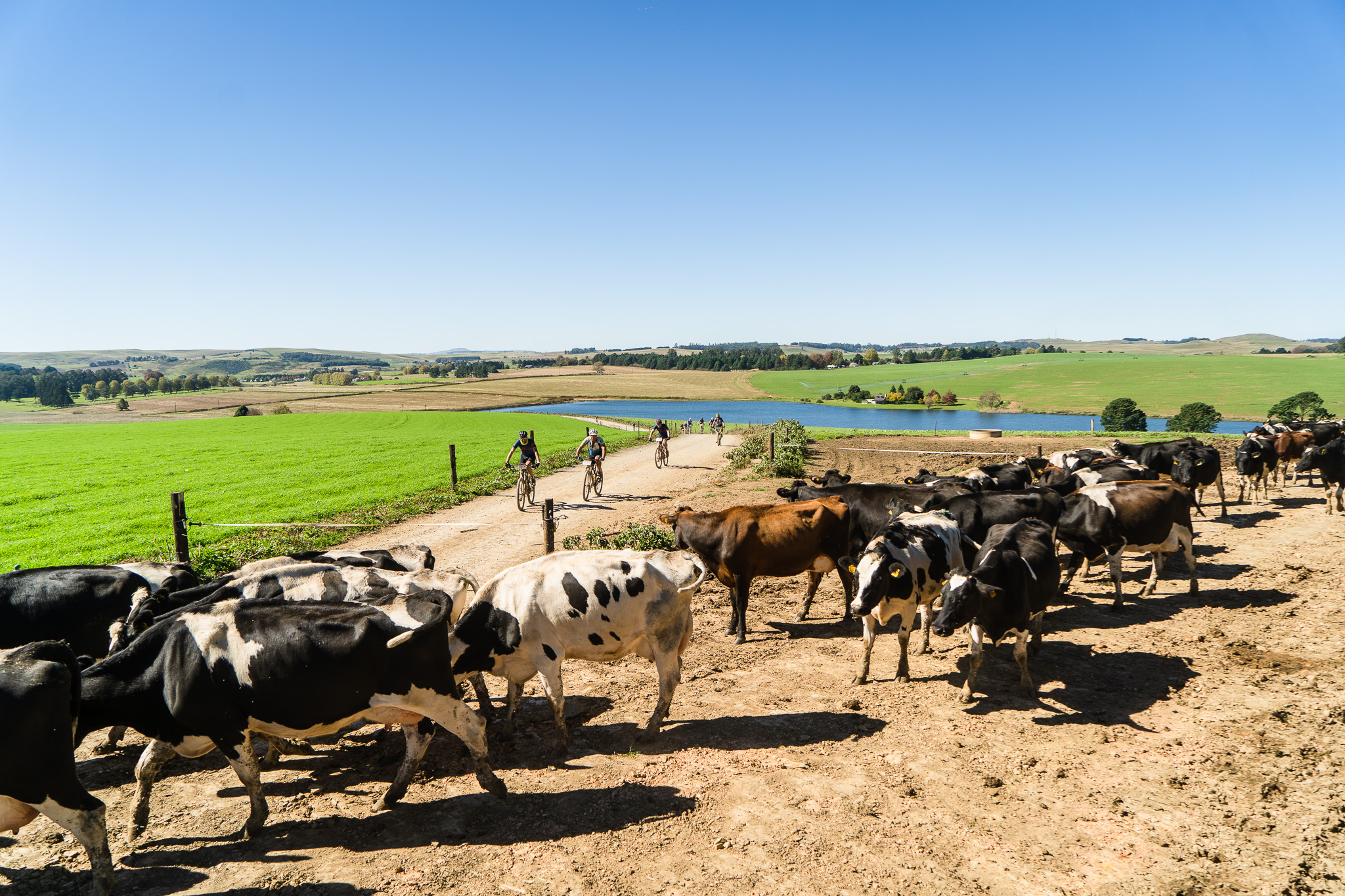
Cow territory on the J2C 2019 (Photo J2C)
Between the smog of Johannesburg and the sea-fog of Scottburgh you ride across land that yields up the whole spectrum of our food and agricultural production: mealies, potato, rapeseed, beet, pine, sugar cane, cows.
There’s so much God on this land.
Unfortunately, though, as you take all of this in you can’t escape national or planetary questions. Pushing pedals through tens of thousands of revolutions a day focuses the mind.
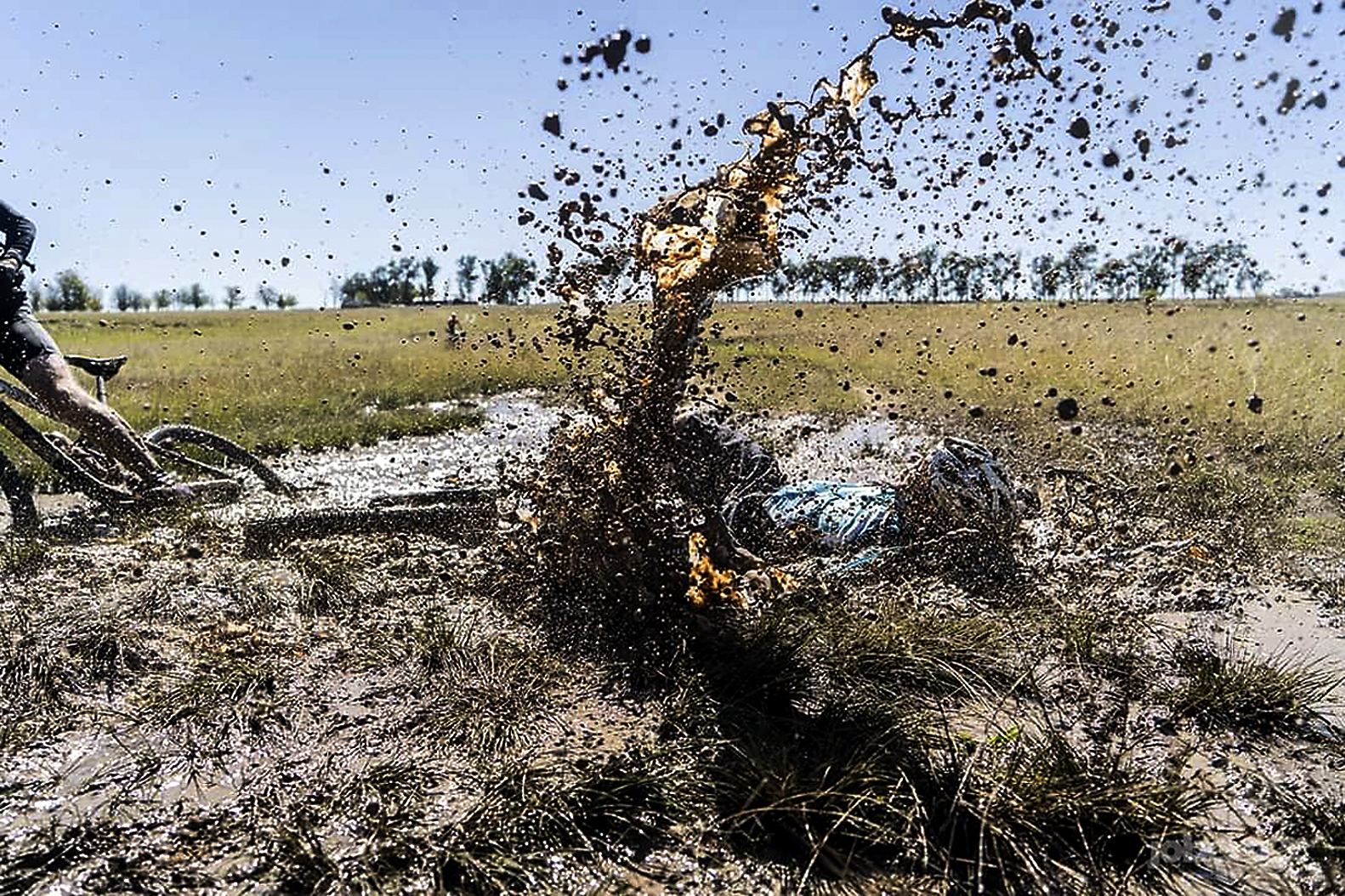
Splash and crash. Rain puddles in the Free State. (Photo: JoBerg2C.)
The land riders cross, seems remarkably pristine and unspoiled. Climate change is insidious and mostly invisible to the naked eye, but the signs of drought, strangled lakes and dry rivers, are proof of its presence. Deforestation is evident in encroaching fields. Ostensibly the land looks unpolluted, but that threat, too, is growing. After leaving Johannesburg, the only times you see human grime is as you approach the small towns: a waste tip being scoured by victims of rural poverty on the edges of the town of Reitz; then the last few kilometers before Scottburgh are heralded by the return of the plastic bag, the oil-polluted puddles, sweet wrappers and cigarette butts.
Human geography, too, has a tale to tell.
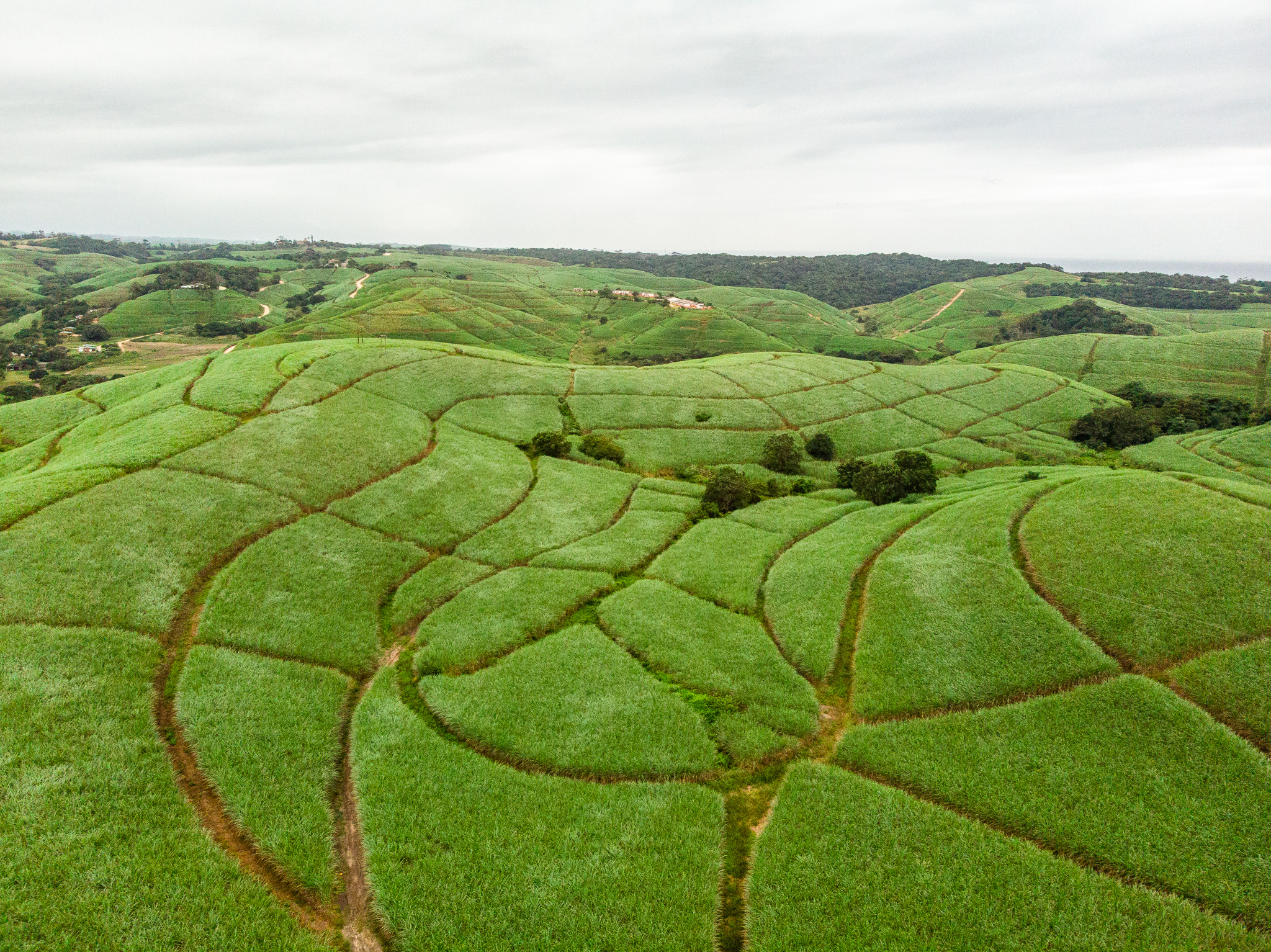
Day 9, the last day of J2C hits the sugar cane fields (Photo: J2C)
The contrast between the natural wealth that surrounds people who live in rural areas and their poverty of income and modern services couldn’t be starker. On some days the race passes through small villages, whose children cry out for “sweets” and whose youth often carry a vacant look of boredom and ennui.
Primary and secondary schools, even if their teachers and students do everything they can to make them proud and dignified, scream out their disadvantage, their libraries empty, the disconnect from a world that opens up through the internet is patent.
Just as rivers have their source, here too we find the place where historic disadvantage and inequality first bubbles to the surface and then turns into a flood that spreads across the whole country. It seems odd that people flee paradise for dense urban informal settlements, the complete antithesis of home. But, in a world where money is king, and where political will, imagination and the resources to mine a dignified living from the thousand possibilities contained in nature is limited, the choice is understandable because it’s not a choice. It’s a necessity.
And so it was that in 2019 for nine days, as I pumped my bike’s pedals, my thoughts played like a stuck record on the title of Alan Paton’s 1981 novel: Ah, But Your Land is Beautiful.
Yes, our land is beautiful.

What goes up must go up some more. Day 8 of J2C 2019. (Photo: J2C)
It is vast. As you roll with its contours, you feel its strange power, you sense its life-giving force; it transfers its dignity, solidity and sense of permanence into those who inhabit it. It calms.
But, ah, our land is also contested. Into these tranquil, peaceful and non-violent hills there is etched our history of blood-letting. Briton and Zulu; Boer and Briton; Afrikaner and African. These hills hide memories of the sorrow, of slavery, of non-paid or low-paid labour; of rape and racism. To the conquering race this pain is invisible; to the conquered it’s a fluorescent shimmer on the leaves.
As you ride across the land you can’t but talk about its politics of landlessness. 2019 was the year of the great land expropriation debate, instilling white fear and black hope. A number of foreign riders asked me about land expropriation, our national vexation. Yet, as I rode over it, the land question became much less abstract.
I’m not good at talking while riding over a hard land. I breathe through my mouth not my nose, so I’m always gulping for air. More practiced athletes have less difficulty.
One day a fellow rider sidled up to me and extemporised on the beauty of the land.
“All this,” he said as he waved his hand over the landscape, “is a reminder of what makes South Africa so unique. Few other countries have lands as beautiful and extensive as these. Where else in the world can you ride across the length of a country and witness an unbroken spectacle of ancient beauty.”
With the 2019 election only weeks away, he told me that he, like many others, was still hedging his bets on South Africa.
“I love the country,” he said; but he had an escape plan and was still waiting and watching. He said there were many other white people like him, with a love of their country, ideas and money to invest, but all hovering in a holding pattern. Many had sent the advanced guards of their families, often restless children, to foreign lands to start carving out new lives while they held the fort and waited.
I listened. Then I asked him whether what he was feeling and seeing was worth taking a risk for? What if all those people like him decided to invest in our country and people, not just their money, but their ideas and morals and capabilities. Perhaps then we would reach that elusive tipping point, find ourselves on a path to peace, equality and social justice.
During this and other conversations I realised that most white people don’t understand “the land question” because they don’t appreciate the lingering indignity of the dispossession that was carried out by their ancestors – far and nor so far.
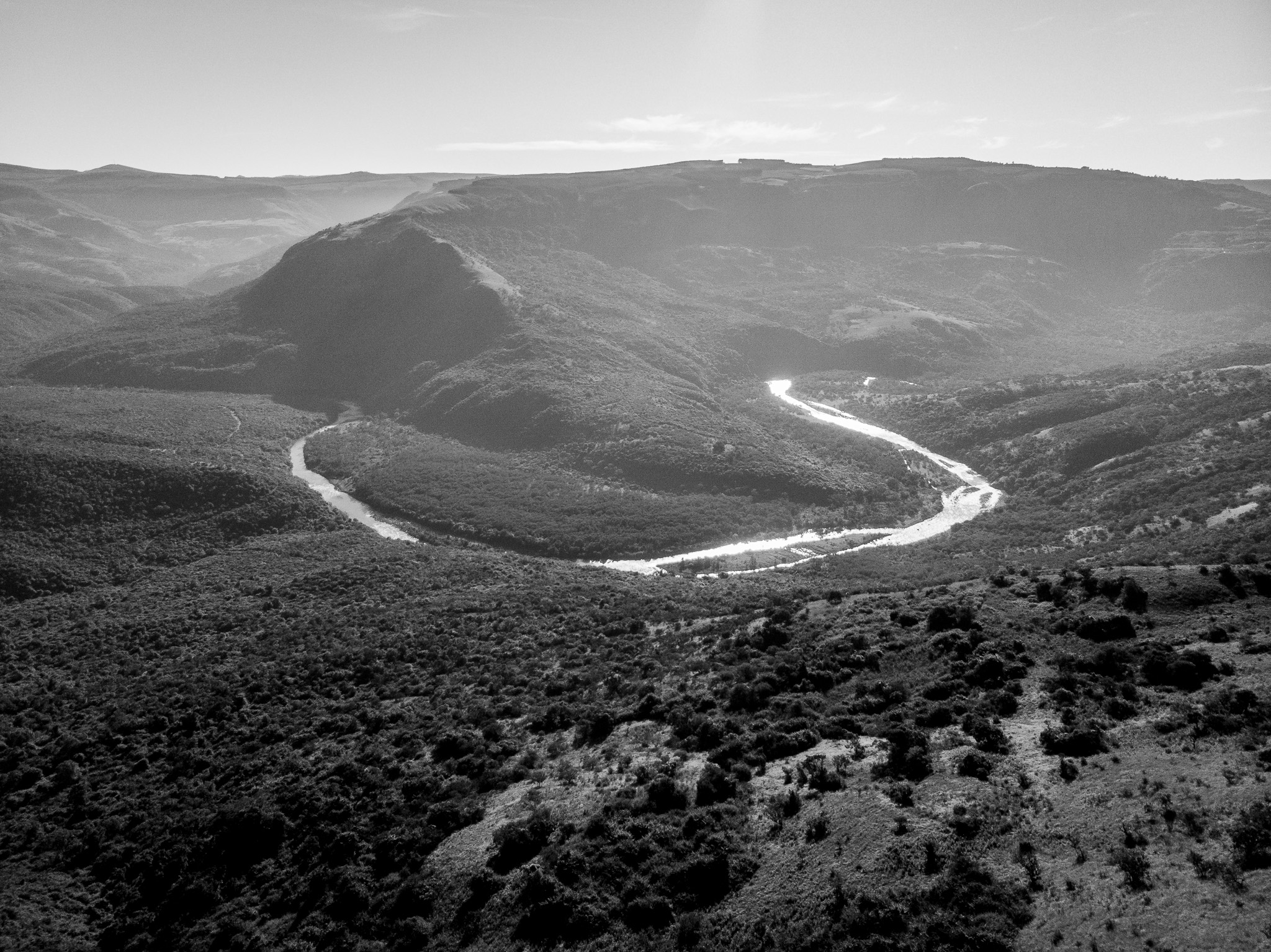
J2C shows off the land. (Photo: J2C)
Yes, the land is beautiful.
Yes, the land is life-giving.
Yes, the land is wealth-creating.
Yes, the land is now owned predominantly by white people with an emotional attachment to it.
But there’s no getting away from the facts of our history.
The land’s coinage has two sides.
Yes, this land was once shared by the first inhabitants of this country – “owned” is the wrong word.
Yes, they too found it beautiful, life-giving and wealth-creating,
And, yes, it was taken away from them – “stolen” is the correct word – by war, by colonial law, by force and with much brutality, indignity and rape.
And as if that wasn’t enough, the indigenous people who first lived on this land, were then marginalised, crippled and humiliated for another century. After being rendered landless, they were barred by racist apartheid laws from finding other means to regain dignity and identity and material wealth.
These are all simple facts.
However, I believe mountain bike riders are good men and women. Probably God-fearing. On the joberg2c they are predominantly white because MTB riding is an expensive sport, as skewed in its participation as many other sports. In their ordinary lives few of these law-abiding men and women would countenance theft of any kind. Under other circumstances all would agree that stolen property should be returned. All would adhere to the rule of law, denounce theft and violence.
So, what’s the blockage when it comes to the land?
I think many white people think the land question is made-up to persecute them.
They don’t understand that because land is so tied up with dignity, wealth and identity the fact that this land once “belonged” to some people and was painfully and violently taken away from them means the theft is not felt as a historical anachronism (“get over it”), a hangover from the past.
It’s as much about identity as it is about economy and if someone robs you of identity you don’t get over it – ever. Or until your identity is restored.
That theft remains the original sin.
It requires resolution, recompense and resolution.
However, we also do understand that time didn’t stand still after the original sin. We do understand that future generations of landowners also came to derive an identity from the land, invest their souls in it. We can understand these were not all intrinsically evil people – even though they did very bad things.
I’m not an expert on land policy or agriculture but what I did come to understand was that there will be no lasting solution to the land question without a coming together of minds, a finding of a common humanity and identity, out of which will come the realisation that the land is big enough for all of us, to work and live on, to protect and preserve.
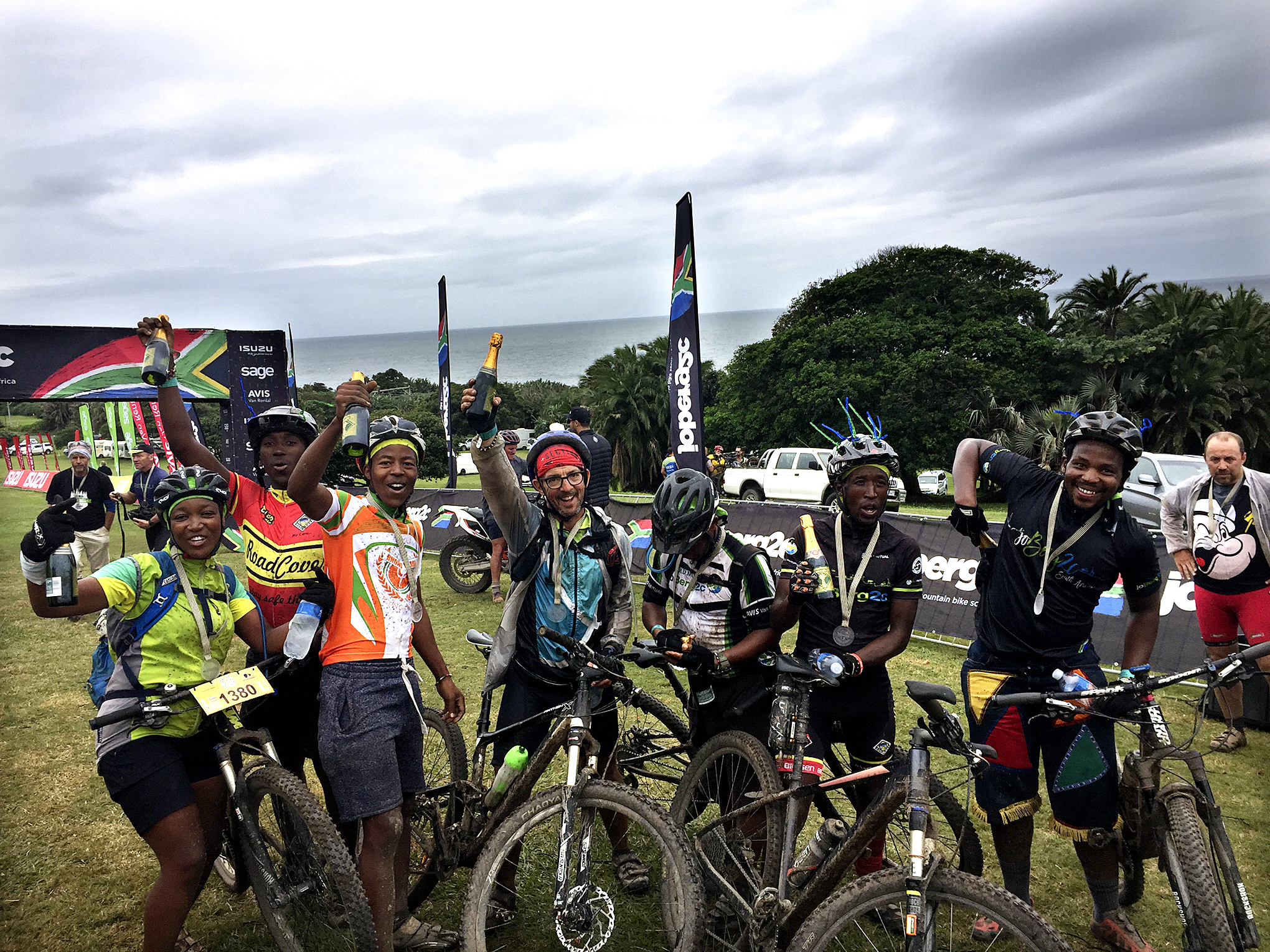
Over the finishing line with the Soweto 10. (Photo: Craig Wapnick)
And so, in the week joberg2c doesn’t start, at an unprecedented time when we are not allowed to ride our bicycles across any land, but when wealth inequality and hunger stalks millions, we should use our lockdown, not just to evoke fond memories of the beloved country but to introspect on our place in it and by what means the common purpose we have discovered in fighting a coronavirus might be extended to fighting for dignity and equal rights for all human beings. DM/MC
"Information pertaining to Covid-19, vaccines, how to control the spread of the virus and potential treatments is ever-changing. Under the South African Disaster Management Act Regulation 11(5)(c) it is prohibited to publish information through any medium with the intention to deceive people on government measures to address COVID-19. We are therefore disabling the comment section on this article in order to protect both the commenting member and ourselves from potential liability. Should you have additional information that you think we should know, please email [email protected]"



 Become an Insider
Become an Insider